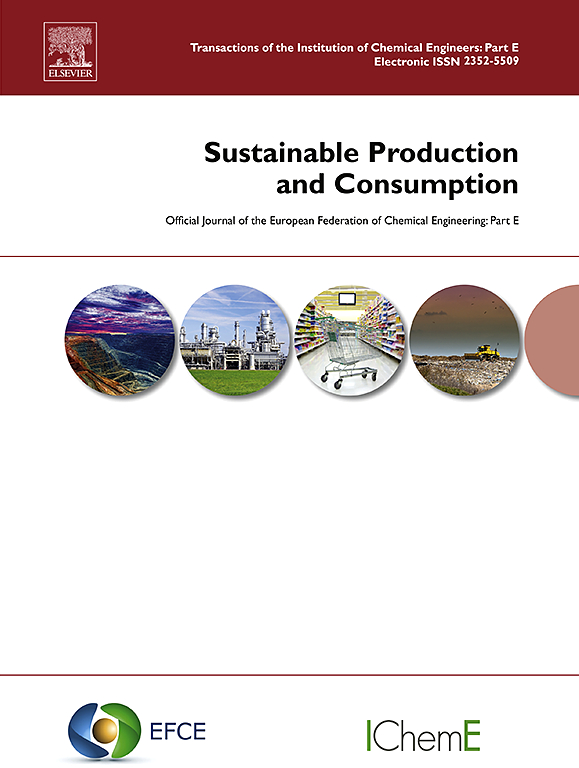德国聚丙烯和聚乳酸一次性杯子对环境和垃圾的影响
IF 10.9
1区 环境科学与生态学
Q1 ENVIRONMENTAL STUDIES
引用次数: 0
摘要
由于管理不当,饮水杯等塑料正在世界各地的环境隔间中积累,影响了生物多样性和生态系统服务。本研究的目的是通过从摇篮到坟墓的生命周期评估,分析和比较聚丙烯和聚乳酸制成的一次性杯子对环境的潜在影响,包括与这些杯子乱扔有关的影响。根据产品在环境中的持久性计算塑料污染影响,并将我们自己的实验结果与文献数据进行比较。为了表明聚丙烯和聚乳酸可能对健康造成的不利影响,对从杯子中迁移出来的化学混合物进行了毒性试验。总的来说,当实验确定降解率时,聚丙烯制成的杯子比聚乳酸制成的杯子对环境的影响更小。然而,在化学物质迁移的毒性方面,聚乳酸杯子的性能要优于聚丙烯杯子。考虑到所有的影响类别,用聚乳酸代替聚丙烯生产杯子对环境的影响没有全面改善。我们的结果表明,使用降解数据的重要性,专门为评估产品测量。在方法上,我们展示了生命周期评估和安全和可持续设计评分的可能整合。需要进一步发展塑料污染影响类别,以综合对陆地环境的影响。本文章由计算机程序翻译,如有差异,请以英文原文为准。
Environmental and littering impacts of disposable cups made of polypropylene and polylactic acid in Germany
As a result of improper management, plastics such as drinking cups are accumulating in environmental compartments worldwide, impacting biodiversity and ecosystem services. The goal of this study is to analyze and compare potential environmental impacts of disposable cups made of Polypropylene and Polylactic acid with the help of a cradle-to-grave life cycle assessment, including impacts related to the littering of these cups. Plastic pollution impacts are calculated based on the products' persistence in the environment, comparing the results of our own experiment to literature data. As an indication of the possible adverse health effects of Polypropylene and Polylactic acid, a toxicity test of the chemical mixtures migrating from the cups is conducted. Overall, the cups made of Polypropylene show lower environmental impacts compared to those made of Polylactic acid when the experimentally determined degradation rates are used. Nevertheless, regarding toxicity of the chemical migrates, the cup made of Polylactic acid performs better than the one made of Polypropylene. Considering all impact categories, there is no overall improvement in environmental impacts of producing the cup from Polylactic acid instead of Polypropylene. Our results indicate the importance of using degradation data measured specifically for the assessed product. Methodologically, we demonstrate a possible integration of life cycle assessment and safe-and-sustainable-by-design scoring. Further development of the plastic pollution impact category is needed to integrate effects on the terrestrial environment.
求助全文
通过发布文献求助,成功后即可免费获取论文全文。
去求助
来源期刊

Sustainable Production and Consumption
Environmental Science-Environmental Engineering
CiteScore
17.40
自引率
7.40%
发文量
389
审稿时长
13 days
期刊介绍:
Sustainable production and consumption refers to the production and utilization of goods and services in a way that benefits society, is economically viable, and has minimal environmental impact throughout its entire lifespan. Our journal is dedicated to publishing top-notch interdisciplinary research and practical studies in this emerging field. We take a distinctive approach by examining the interplay between technology, consumption patterns, and policy to identify sustainable solutions for both production and consumption systems.
 求助内容:
求助内容: 应助结果提醒方式:
应助结果提醒方式:


